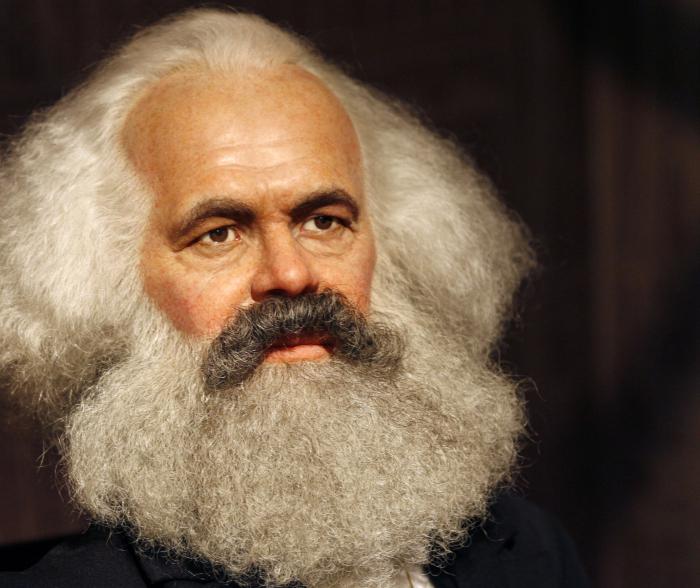In sociological studies, the theory of social stratification does not have a single holistic form. It is based on diverse concepts related to social inequality, the theory of classes, social masses and elites, both complementary and not corresponding to each other. The main criteria defining the historical types of stratification are property relations, rights and obligations, a subordination system, etc.
Basic concepts of stratification theories
Stratification is a "hierarchically organized interaction of groups of people" (Radaev V.V., Shkaratan O. I., "Social stratification"). The criteria for differentiation in relation to the historical type of stratification include:
- physical and genetic;
- slaveholding;
- caste;
- estate;
- way;
- social and professional;
- class;
- cultural and symbolic;
- cultural and normative.
Moreover, all historical types of stratification will determine their own differentiation criterion and the method of distinguishing differences. Slavery, for example, as a historical type as the main criterion will single out the rights of citizenship and property, and as a method of determination - enslaving law and military coercion.
In the most generalized form, the following historical types of stratification can be represented: table 1.
The main types of stratificationTypes | Definition | Subjects |
Slavery | A form of inequality in which some individuals are the full property of others. | slaves, slaveholders |
Castes | Social groups adhering to strict norms of group behavior and not allowing representatives of other groups to join their ranks. | brahmanas, warriors, peasants, etc. |
Estates | Large groups of people with the same rights and obligations inherited. | clergy, nobles, peasants, townspeople, artisans, etc. |
Classes | Social communities distinguished by the principle of relations to property and the social division of labor. | workers, capitalists, feudal lords, peasants, etc. |
It should be noted that the historical types of stratification - slavery, castes, estates and classes - do not always have clear boundaries between themselves. So, for example, the concept of caste is used mainly to the Indian stratification system. We will not meet the category of brahmanas in any other social system. Brahmins (aka priests) were endowed with special rights and privileges that no other category of citizens had any more. It was believed that the priest spoke on behalf of God. According to Indian tradition, brahmanas were created from the mouth of God Brahma. Warriors were created from his hands, the king of which was considered the main one. Moreover, a person belonged to a particular caste from birth and could not change it.
On the other hand, the peasants could act both as a separate caste and as an estate. Moreover, they could also be divided into two groups - simple and rich (prosperous).
Social space concept
The famous domestic sociologist Pitirim Sorokin (1989-1968), exploring the historical types of stratification (slavery, castes, classes), singles out “social space” as a key concept. Unlike the physical, in the social space, the subjects located next to each other can simultaneously be located on completely different levels. And vice versa: if certain groups of subjects belong to the historical type of stratification, then it is not at all necessary that they are geographically located next to each other (P. Sorokin, “Man. Civilization. Society”).
The social space in Sorokin’s concept is multidimensional, including cultural, religious, professional and other vectors. This space is all the more extensive, the more complex is the society and the distinguished historical types of stratification (slavery, castes, etc.). Sorokin also considers the vertical and horizontal levels of separation of social space. The horizontal level includes political associations, professional activities, religious organizations , etc. The vertical level is the differentiation of individuals in terms of the hierarchical position in the group (leader, deputy, subordinates, parishioners, electorate, etc.).

Sorokin singles out such forms of social stratification as political, economic, and professional. Inside each of them there is an additional own stratification system. In turn, the French sociologist Emil Durkheim (1858-1917) considered the system of separation of subjects within a professional group from the point of view of the specifics of their work. A special function of this division is the creation of a sense of solidarity between two or more individuals. At the same time, he ascribes to her a moral character (E. Durkheim, “The Function of the Division of Labor”).
Historical types of social stratification and the economic system
In turn, the American economist Frank Knight (1885-1972), who considers social stratification within the framework of economic systems, identifies maintaining / improving the social structure and stimulating social progress as one of the key functions of economic organizations (Knight F., “Economic Organization” )
The American-Canadian economist of Hungarian origin Karl Polanyi (1886-1964) writes about the special connection between the economic sphere and social stratification for the subject: “A person does not act to ensure his personal interests in the sphere of material wealth, he seeks to guarantee his social status, their social rights and benefits. He appreciates material objects only insofar as they serve this purpose ”(K. Polanyi,“ Societies and Economic Systems ”).
Class theory in sociological science
Despite a certain affinity of characteristics, it is customary in sociology to differentiate historical types of stratification. Classes, for example, should be separated from the concept of social strata. By the social layer is meant social differentiation within the framework of a hierarchically organized society (Radaev V.V., Shkaratan O.I., “Social stratification”). In turn, the social class is a group of citizens free in political and legal relations.

The most famous example of class theory is usually attributed to the concept of Karl Marx, which is based on the doctrine of the socio-economic formation. The change of formations leads to the emergence of new classes, a new system of interaction of productive forces and production relations. In the Western sociological school, there are a number of theories that define a class as a multidimensional category, which, in turn, leads to the danger of blurring the line between the concepts of “class” and “stratum” (A. Zhvitiashvili, “Interpretation of the concept of“ class ”in modern Western sociology ").
From the standpoint of other sociological approaches, historical types of stratification also imply a division into the upper (elite), middle and lower classes. Also possible variations of this separation.
The concept of an elite class
In sociology, the concept of elite is perceived quite ambiguously. For example, in the stratification theory of Randall Collins (1941), an elite group is a group of people who control a lot of people, but who reckon with few people (Collins R. “Stratification through the prism of conflict theory”). Wilfredo Pareto (1848-1923), in turn, divides society into the elite (the highest stratum) and the non-elite. The elite class also consists of 2 groups: the ruling and non-ruling elites.
Collins includes the heads of government, the leaders of the armies, influential businessmen, and so on.
The worldview characteristics of these categories are determined, first of all, by the duration of holding this class in power: “Feeling ready for submission becomes the meaning of life, and disobedience is seen in this environment as something unthinkable” (R. Collins, “Stratification through the prism of conflict theory”). It is membership in this class that determines the degree of power that an individual possesses as its representative. Moreover, power can be not only political, but also economic, religious and ideological in nature. In turn, these forms can be interconnected.
Middle class specifics
It is customary to include the so-called circle of performers in this category. The specifics of the middle class is such that its representatives simultaneously occupy a dominant position over some subjects and subordinate to others. The middle class also has its own internal stratification: the upper middle class (performers dealing only with other performers, as well as large, formally independent businessmen and professionals dependent on good relations with customers, partners, suppliers, etc.) and the lower middle class ( administrators, managers - those who are on the lower border in the system of power relations).
A. N. Sevastyanov characterizes the middle class as anti-revolutionary. According to the researcher, this fact is explained by the fact that the middle class has something to lose - in contrast to the revolutionary class. What the middle class seeks to acquire can be obtained without revolution. In this regard, representatives of this category are indifferent to the issues of restructuring society.
Working class
The historical types of social stratification of society from the standpoint of classes into a separate category distinguish the class of workers (the lowest class in the hierarchy of society). Its representatives are not included in the organizational communication system. They are aimed at the immediate present, and a dependent position forms a certain aggressiveness in them in the perception and evaluation of the social system.
The lower class is characterized by an individualistic attitude towards themselves and their own interests, the absence of stable social ties and contacts. This category consists of temporary laborers, permanent unemployed, beggars, etc.
Domestic approach in the theory of stratification
In Russian sociological science, there are also different views on historical types of stratification. Estates and their differentiation in society are the basis of socio-philosophical thinking in pre-revolutionary Russia, which subsequently caused controversy in the Soviet state until the 60s of the twentieth century.
With the beginning of the Khrushchev thaw, the issue of social stratification falls under strict ideological control by the state. The basis of the social structure of society is represented by the class of workers and peasants, and a layer of the intelligentsia also constitutes a separate category. The idea of “convergence of classes” and the formation of “social homogeneity” is constantly supported in public consciousness. At that time, topics of bureaucracy and nomenclature in the state were hushed up. The beginning of active research, the object of which was the historical type of stratification, is laid in the perestroika period with the development of publicity. The introduction of market reforms in the economic life of the state has revealed serious problems in the social structure of Russian society.
Characterization of marginalized groups
Also, a separate place in sociological stratification theories is occupied by the category of marginality. In the framework of sociological science, under this concept it is customary to understand “an intermediate position between social structural units, or the lowest position in the social hierarchy” (O. N. Galsanamzhilova, “On the issue of structural marginality in Russian society”).
In this concept, it is customary to distinguish two types: marginality-peripherality, marginality-transition. The latter characterizes the intermediate position of the subject in the transition from one socio-status position to another. This type may be a consequence of the social mobility of the subject, as well as the result of a change in the social system in society with dramatic changes in the lifestyle of the subject, type of activity, etc. Social connections are not destroyed. A characteristic feature of this type is a certain incompleteness of the transition process (in some cases, it is difficult for the subject to adapt to the conditions of the new social system of the society - a kind of “freezing” occurs).

Signs of peripheral marginality are: the lack of objective belonging of the subject to a certain social community, the destruction of his past social ties. In different sociological theories, this type of population can bear such names as “outsiders,” “outcasts,” “outcasts” (some authors have “declassed elements”), etc. Within the framework of modern stratification theories, studies of status inconsistency — inconsistency, should be noted. inconsistencies of certain socio-status characteristics (income level, profession, education, etc.). All this leads to an imbalance of the stratification system.
Theory of stratification and an integrated approach
The modern theory of the stratification system of society is in a state of transformation caused by both a change in the specifics of previously existing social categories and the formation of new classes (primarily due to socio-economic reforms).
In a sociological theory that examines the historical types of stratification of society, the important point is not to reduce to one dominant social category (as is the case with class theory within the framework of Marxist teaching), but to conduct a broad analysis of all possible structures. A separate place should be given to an integrated approach that considers certain categories of social stratification from the point of view of their relationship. In this case, the question arises of the hierarchy of these categories and the nature of their influence on each other as elements of a common social system. The solution of this issue involves the study of various stratification theories in the framework of a comparative analysis that compares the key points of each of the theories.